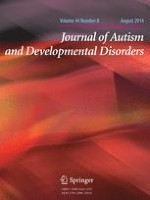01-08-2014 | Original Paper
Knowledge of Autism and Attitudes of Children Towards Their Partially Integrated Peers with Autism Spectrum Disorders
Gepubliceerd in: Journal of Autism and Developmental Disorders | Uitgave 8/2014
Log in om toegang te krijgenAbstract
This study aimed to measure the effects of contact with integrated students with autism spectrum disorders (ASD) on the knowledge, attitudes and empathy of children (n = 224) from grades 4–6. A comparison group of children (n = 251) who had no contact with classmates with ASD was also included. All participants completed self-report instruments. The implementation of multilevel modeling and moderation analysis indicated significant effects on all dependent variables as well as differences across gender and grades. Implications are discussed regarding the role of contact on peers’ conceptions of autism and their attitudes towards children with ASD within inclusionary settings.
